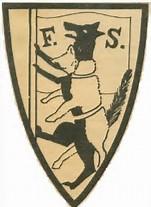Great company you've chosen if you are. Wonderful folks like Adolf Hitler, Benito Mussolini, Vlad Putin, Duterte of the Philippines, that Saudi Arabia butcher Crown Prince. Were they all to get together to celebrate NATIONALISM what kind of entertainment would be featured? Dismembering those who criticize them?. Eviscerating vilifying those who despise them?
The name swastika comes from Sanskrit (Devanagari: स्वस्तिक, pronounced: swastik) and denotes "conducive to well being or auspicious".[7][8] In Hinduism, the clockwise symbol is called swastika, symbolizing surya (sun), prosperity and good luck, while the counterclockwise symbol is called sauvastika, symbolizing night or tantric aspects of Kali.[8] In Jainism, a swastika is the symbol for Suparshvanatha—the seventh of 24 Tirthankaras (spiritual teachers and saviours), while in Buddhism it symbolizes the auspicious footprints of the Buddha.[8][9][10]
The swastika is an icon widely found in human history and the modern world.[4][8] In various forms it is alternatively known in various European languages as the Hakenkreuz, gammadion, cross cramponnée, croix gammée, fylfot or tetraskelion and in East Asia as the wàn 卐/卍/萬, meaning "all things", and the manji. A swastika generally takes the form of a cross whose arms are of equal length and perpendicular to the adjacent arms, each bent midway at a right angle.[11][12] It is found in the archeological remains of the Indus Valley Civilization and Mesopotamia as well as in early Byzantine and Christian artwork.[4][8]
The swastika was adopted by several organizations in pre–World War I Europe and later, and most notably, by the Nazi Party and Nazi Germany prior to World War II. It was used by the Nazi Party to symbolize German nationalistic pride. To Jews and the enemies of Nazi Germany, it became a symbol of antisemitism and terror.[5] In many Western countries, the swastika is viewed as a symbol of racial supremacy and intimidation because of its association with Nazism.[6][13][14] The reverence for the swastika symbol in Asian cultures, in contrast to the stigma in the West, has led to misinterpretations and misunderstandings.[15][16]
The word swastika has been used in the Indian subcontinent and the middle east since 500 BC.[17] Its appearance in English is more recent. In the 1870s, replacing gammadion, from Greek γαμμάδιον.[11] It is alternatively spelled in contemporary texts as svastika,[18]while in the 19th- and early 20th-century, alternate spellings such as suastika were occasionally used.[19] It was derived from the Sanskritterm (Devanagari: स्वस्तिक), which transliterates to svastika under the commonly used IAST transliteration system, but is pronounced closer to "swastika" when letters are used with their English values. The first attested use of the word swastika in a European text is found in 1871 with the publications of Heinrich Schliemann, who while crudely digging the Hisarlik mound near the Aegean Sea coast, for the lost history of Troy (Trojan war), discovered over 1,800 ancient samples of the swastika symbol and its variants. Schliemann linked his findings to the Sanskrit swastika.[13][20][21]
The word swastika derives from the Sanskrit root swasti, which is composed of su, ("good, well") and asti ("it is, there is").[22] The word swasti occurs frequently in the Vedas and it means "well, good, auspicious, luck, success, prosperity".[23][24] Swastika is a derived word and connotes a form of welcome or a sign of something "associated with well-being".[23] According to Monier-Williams, a majority of scholars consider it a solar symbol, and in the ancient Indian texts the base swasti is equivalent to "may it be well with thee! hail! health! adieu! so be it!".[23] The sign implies something fortunate, lucky or auspicious, and when applied to entrances, doors, mandalas or object it denotes or reminds of auspiciousness or well-being.[23]
The earliest known textual use of the word swastika is in Panini's Ashtadhyayi, which uses it to explain one of the Sanskrit grammar rules, in the context of a type of identifying mark on a cow's ear.[22] Most scholarship suggests Panini lived in or before mid 4th-century BCE(floruit),[25][26] possibly in 6th or 5th century BCE.[27][28]
Walter this was intended for Slartibart, but this site is weird sometimes.











